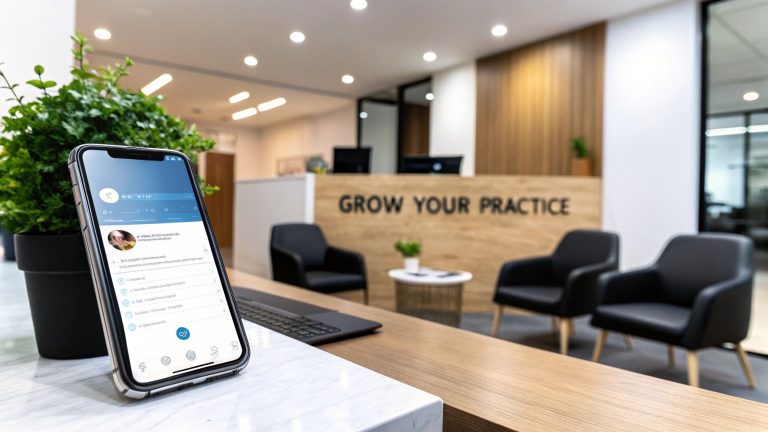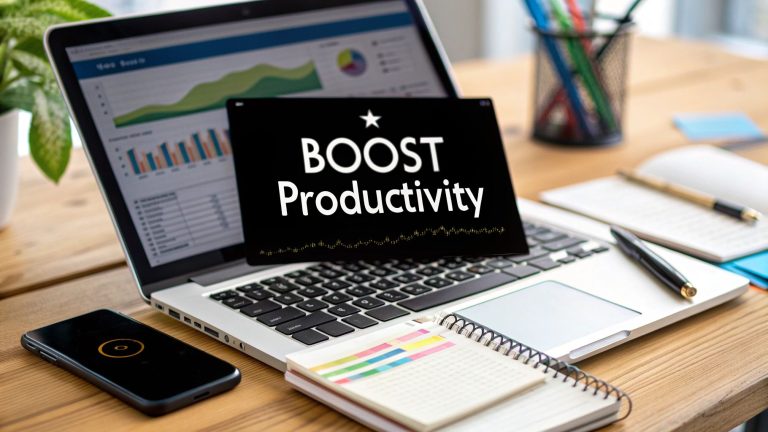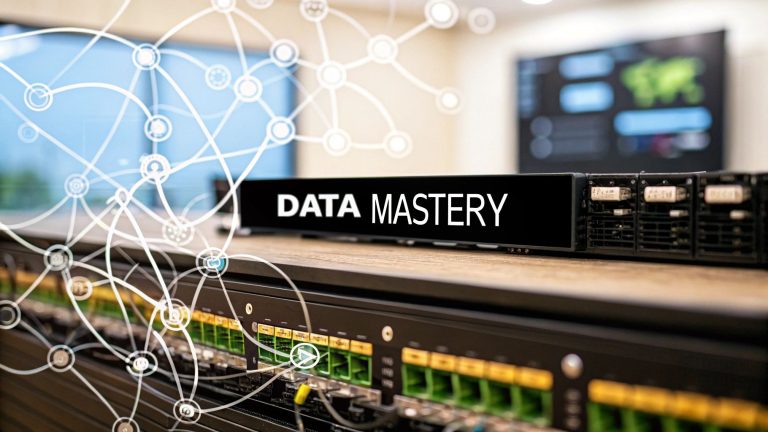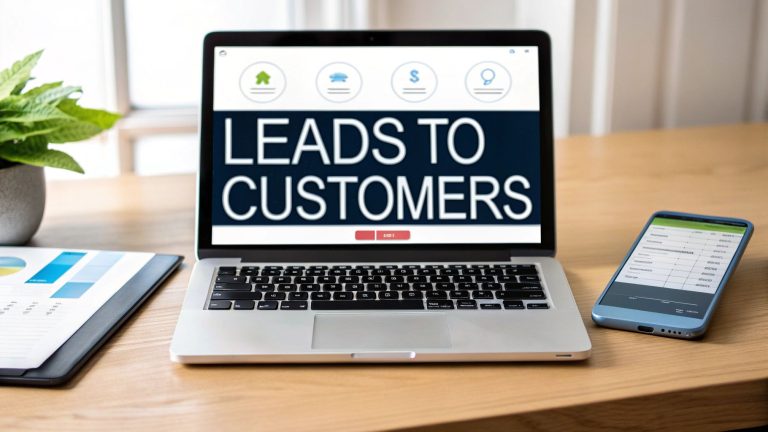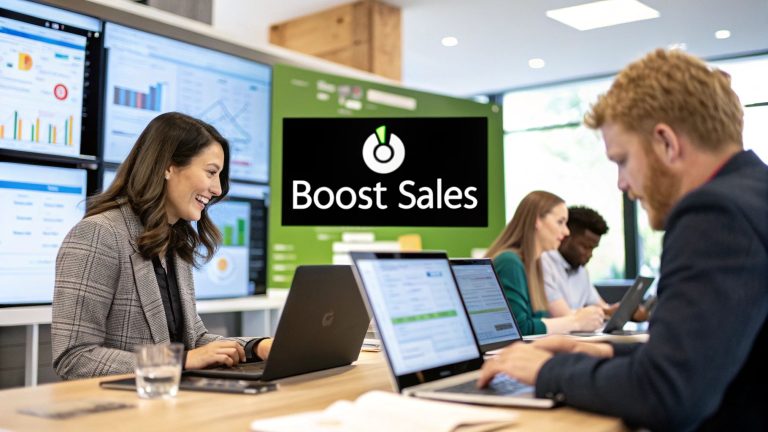Boost ROI with best practices facebook ads in 2025
In 2025, simply running Facebook ads isn't enough to guarantee success. With increasing competition and smarter algorithms, mastering the platform requires a strategic, data-driven approach. Many businesses struggle with wasted ad spend, low conversion rates, and a frustrating inability to scale their results. The problem isn't the platform; it's the process. This guide moves beyond generic advice to provide a definitive list of the best practices for Facebook ads that seasoned professionals use to drive predictable growth and maximize return on investment (ROI).
Each practice is a critical component of a high-performing campaign, from foundational audience work to advanced optimization techniques. You will learn actionable strategies for everything from layered audience targeting and video-first creative to A/B testing with statistical rigor and optimizing the post-click experience. For many businesses, especially local ones, these tactics are potent tools for growth. You can discover more about how Facebook Ads for Local Businesses Made Simple and then use the advanced methods here to amplify your results.
This listicle will equip you with the specific, practical details needed to implement these strategies effectively. Prepare to transform your ad account from a cost center into a powerful revenue engine.
1. Audience Segmentation and Layered Targeting
Audience segmentation and layered targeting breaks down your target audience into specific, granular segments based on demographics, behaviors, interests, and purchase history. This method delivers highly relevant messages and improves ROI by aligning ad creative with each group.
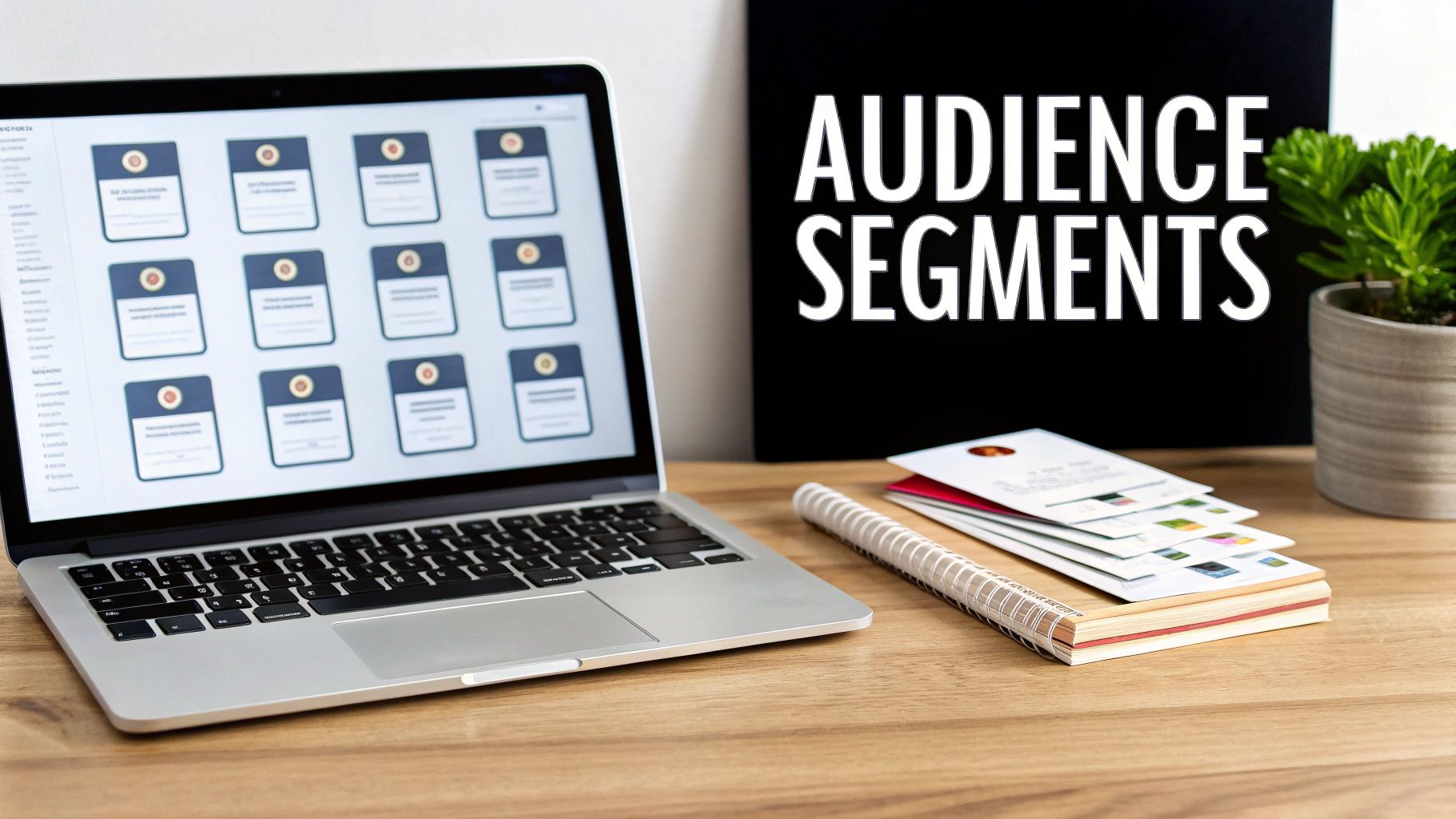
What is Audience Segmentation and Layered Targeting
This approach moves beyond broad targeting by creating separate campaigns for defined segments. For example, e-commerce brands can split audiences by past purchase value while SaaS companies target buyer personas like decision makers or end users.
Why Use This Approach
- Improves ad relevance and click through rates
- Reduces wasted spend on unqualified users
- Aligns messaging with user intent and lifecycle stage
Successful Examples
- An online retailer increased conversion rate by 35 percent by segmenting shoppers into seasonal and repeat buyer lists
- A SaaS provider saw a 20 percent lift in demo sign ups by targeting executive level and technical buyer personas separately
Actionable Tips
- Start with 3-5 key segments then expand based on performance
- Use Facebook Audience Insights to profile segment characteristics
- Create independent campaigns per segment to track results
- Regularly update segments using CRM and purchase data
- Test different audience combinations to find top performers
Learn more about Audience Segmentation and Layered Targeting on domain.com to refine your strategy.
2. Video-First Creative Strategy
Video-first creative strategy is one of the best practices facebook ads, prioritizing video as the primary ad format on Facebook. It recognizes that moving visuals generate higher engagement, better recall, and improved conversion rates compared to static images.
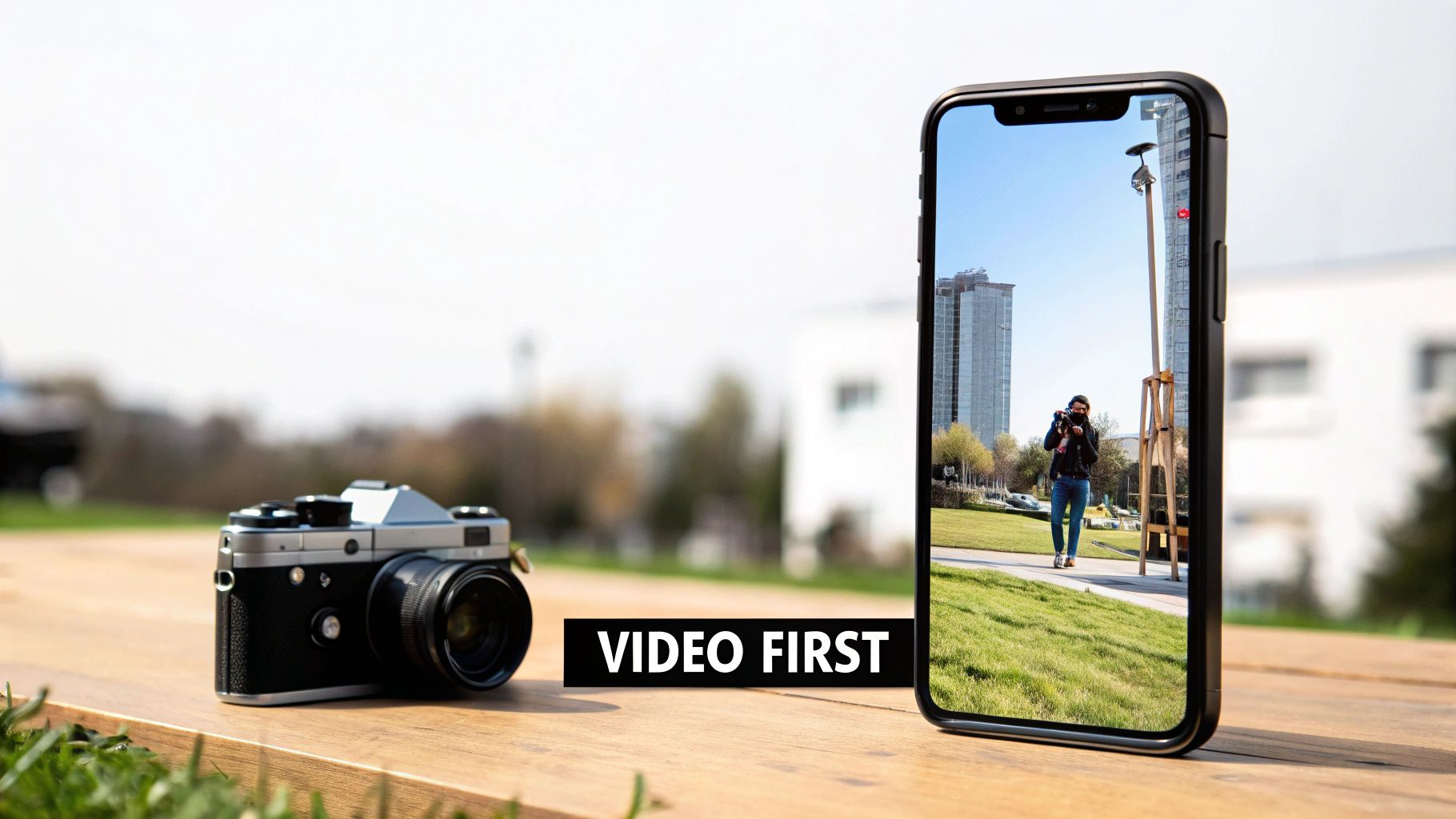
What is Video-First Creative Strategy
This approach places short-form video at the core of your campaign, from square clips in the News Feed to vertical Stories. It combines quick hooks, captions, and text overlays so messages land even when muted. Popularized by experts like Gary Vaynerchuk, Wistia, and Vidyard, it adapts creative for mobile-first audiences.
Why Use This Approach
- Increases engagement rates by up to 5x over static ads
- Enhances ad recall and overall brand lift
- Optimizes for mobile users in sound-off environments
- Drives higher click-through and conversion rates
- Leverages Facebook’s algorithmic preference for video content
Successful Examples
- Dollar Shave Club’s viral videos boosting product awareness by 112 percent
- A native ad series featuring customer testimonials lifting conversions by 50 percent
- Luxury fashion labels using cinematic storytelling to reinforce brand prestige
Actionable Tips
- Include captions for silent or low-sound contexts
- Hook viewers within the first 1–2 seconds
- Use text overlays to highlight key messages
- Test vertical formats (4:5 or 9:16) for Stories and Reels
- Add clear CTAs in the final 2–3 seconds
- Maintain 1:1 or 4:5 ratios for optimal feed performance
Learn more about Video-First Creative Strategy on domain.com to refine your tactics.
3. Dynamic Creative Optimization (DCO)
Dynamic Creative Optimization, or DCO, uses Facebook’s machine learning to assemble and test multiple ad creative combinations across your target audiences and placements. The system allocates budget to top performers in real time, making it one of the best practices Facebook Ads strategies for maximizing return on ad spend.
What is Dynamic Creative Optimization (DCO)
This method breaks creative assets into modular components – images, headlines, primary text and CTAs. Facebook then rotates these variations instantly to learn which mix resonates best with each audience segment.
Why Use This Approach
- Delivers highly relevant ad combinations at scale
- Reduces manual A/B testing time and costs
- Improves click-through rates and conversion paths
DCO automates creative testing, shifting spend to winning assets so you never miss a top-performing combination.
Successful Examples
- An e-commerce brand tested over 20 image-headline pairings, boosting ROAS by 40%
- A B2B SaaS company optimized across three value propositions, increasing demo requests by 25%
- A travel brand ran destination-specific creative sets, lifting bookings by 30%
Actionable Tips
- Upload 5–10 diverse images, headlines, and descriptions to feed the algorithm
- Allocate at least $1,500–3,000 per week to allow proper learning
- Let DCO run for 1–2 weeks before evaluating performance
- Monitor outputs closely to maintain brand consistency
- Use clear primary text and headlines to guide automated combinations
- Pause DCO if any creative drifts from your brand voice
Implementing Dynamic Creative Optimization is a powerful best practice Facebook Ads approach for small and mid-sized businesses looking to automate creative testing and drive stronger results.
4. Strategic Bid Strategy and Automated Bidding
Strategic bid strategy and automated bidding leverages Facebook's machine learning to optimize ad delivery for specific business outcomes. This approach moves beyond manual bidding to let the algorithm automatically adjust bids in real-time, maximizing results like conversions or value while controlling costs.
What is Strategic Bid Strategy and Automated Bidding
This method involves selecting an automated bid strategy such as Lowest Cost, Bid Cap, or Target Cost that aligns with your campaign goals. Instead of setting manual bids for clicks or impressions, you define your desired outcome, and Facebook's algorithm works to achieve it within your budget. This is one of the most effective best practices for Facebook ads because it lets the platform's powerful AI do the heavy lifting.
Why Use This Approach
- Automates bid management to save time and improve efficiency
- Optimizes ad spend toward high-value actions and users
- Helps maintain a stable Cost Per Acquisition (CPA) or Return on Ad Spend (ROAS)
Successful Examples
- An e-commerce brand used Target Cost to maintain a consistent CPA for new customer acquisition during a competitive holiday season
- A lead generation company leveraged Lowest Cost with a bid cap to maximize lead volume without exceeding its Cost Per Lead (CPL) threshold
- An app developer drove higher-value installs by optimizing for in-app purchases using value-based bidding strategies
Actionable Tips
- Set a realistic Target Cost based on your 7-day historical average CPA, adjusting by 10-15% as needed
- Use Lowest Cost with a Bid Cap to control maximum spend per action while still seeking the cheapest opportunities
- Provide sufficient budget (ideally $500+/day) and conversion volume to help the algorithm exit the learning phase faster
- Monitor actual CPA vs. target to validate that the strategy is performing effectively and make adjustments
- Align bid strategies directly with your core business objectives, such as CPA, ROAS, or Customer Acquisition Cost (CAC)
5. Conversion Tracking and Pixel Implementation
Effective conversion tracking is the foundation of any successful Facebook ad campaign. By properly implementing the Meta Pixel and Conversions API, you can accurately measure user actions on your website, attribute conversions back to specific ads, and enable powerful optimization strategies. This technical setup is essential for all other best practices to function effectively.
What is Conversion Tracking and Pixel Implementation
This process involves placing a snippet of code (the Meta Pixel) on your website to send data back to Facebook. The Conversions API complements this by sending data directly from your server, creating a more reliable connection that isn't affected by browser tracking limitations. This dual approach ensures you capture a complete picture of how users interact with your business after clicking an ad.
Why Use This Approach
- Provides accurate measurement of campaign ROI and cost-per-acquisition
- Enables ad optimization for specific conversion events like purchases or signups
- Allows for the creation of powerful Custom Audiences for retargeting
Successful Examples
- An e-commerce brand tracks AddToCart, InitiateCheckout, and Purchase events to optimize its sales funnel and retarget abandoned carts
- A B2B company measures form submissions for lead magnets and consultation bookings to calculate its cost-per-lead accurately
- A SaaS platform tracks trial signups and new account creations to identify which campaigns drive the most valuable users
Actionable Tips
- Implement using Meta's Conversions API alongside the Pixel for maximum data reliability
- Track multiple conversion events throughout your funnel, not just the final sale
- Set up conversion values for purchase and lead events to measure return on ad spend (ROAS)
- Use server-side tracking to bypass browser ad blockers and tracking preventions
- Test pixel implementation thoroughly with the Events Manager tool before launching campaigns
- Create custom conversion events for key bottom-of-funnel actions unique to your business
Learn more about Conversion Tracking and Pixel Implementation on leadsavvy.pro to build a solid foundation for your campaigns.
6. A/B Testing Framework and Statistical Rigor
Implementing a systematic A/B testing framework allows you to make data-driven decisions instead of relying on assumptions. This practice involves methodically testing individual ad variables like creative, copy, or targeting to identify which variations produce the best results with statistical validity.
What is an A/B Testing Framework
An A/B testing framework is a structured approach to comparing two or more versions of an ad element to see which one performs better. By isolating one variable at a time, such as a headline or a call-to-action button, you can attribute performance changes directly to that specific element. This rigor ensures your optimization efforts are backed by reliable data.
Why Use This Approach
- Eliminates guesswork and gut-feel decisions from optimization
- Provides clear, quantifiable evidence of what drives performance
- Allows for continuous, incremental improvements to campaigns
- Builds a knowledge base of what resonates with your audience
Successful Examples
- An e-commerce retailer improved click-through rates by 12 percent by testing different CTA button colors
- A SaaS company boosted landing page conversions by 20 percent after testing two distinct value propositions in their ad copy
- A nonprofit increased its average donation size by 25 percent by testing different suggested gift amounts
Actionable Tips
- Test one variable at a time to establish clear causation
- Use an online calculator to determine the required sample size for validity
- Run tests for at least 7-14 days to account for daily performance variations
- Aim for a minimum of 100 conversions per variation to ensure statistical significance
- Document all test hypotheses, variations, and outcomes for future reference
- Use a 95% confidence level as the minimum threshold for declaring a winner
7. Retargeting and Audience Sequencing
Retargeting and audience sequencing is a strategic approach that guides users through the sales funnel with messaging tailored to their previous interactions. Instead of showing the same ad to every website visitor, this method delivers a series of ads that align with their journey, from initial interest to final conversion.
What is Retargeting and Audience Sequencing
This advanced tactic involves creating custom audiences based on specific user actions and then delivering a sequence of ads to move them to the next stage. It creates a cohesive narrative, acknowledging a user's prior engagement and addressing their needs as they evolve. This is one of the most effective best practices for Facebook ads because it nurtures leads programmatically.
Why Use This Approach
- Nurtures leads by providing relevant information at each decision stage
- Overcomes user objections with sequentially tailored messaging
- Increases conversion rates by maintaining engagement with warm audiences
Successful Examples
- An e-commerce store creates a sequence for cart abandoners, first with a reminder, then a testimonial, and finally a limited-time offer
- A B2B SaaS company targets whitepaper downloaders with ads showcasing a product demo, followed by case studies
Actionable Tips
- Create specific audiences based on actions like "viewed product" or "added to cart," not just "all website visitors"
- Use sequential messaging that builds on the last ad and guides the user forward
- Rotate creative frequently to combat ad fatigue in small retargeting pools
- Implement frequency caps to avoid overwhelming users
- Exclude converters from retargeting campaigns to prevent wasted ad spend and annoying customers
8. Landing Page Optimization and Post-Click Experience
Landing page optimization ensures the post-click experience aligns perfectly with your ad's promise, guiding users toward a single conversion goal. This practice involves creating dedicated, message-matched pages that are mobile-friendly and free from distractions, maximizing the value of every click you pay for.
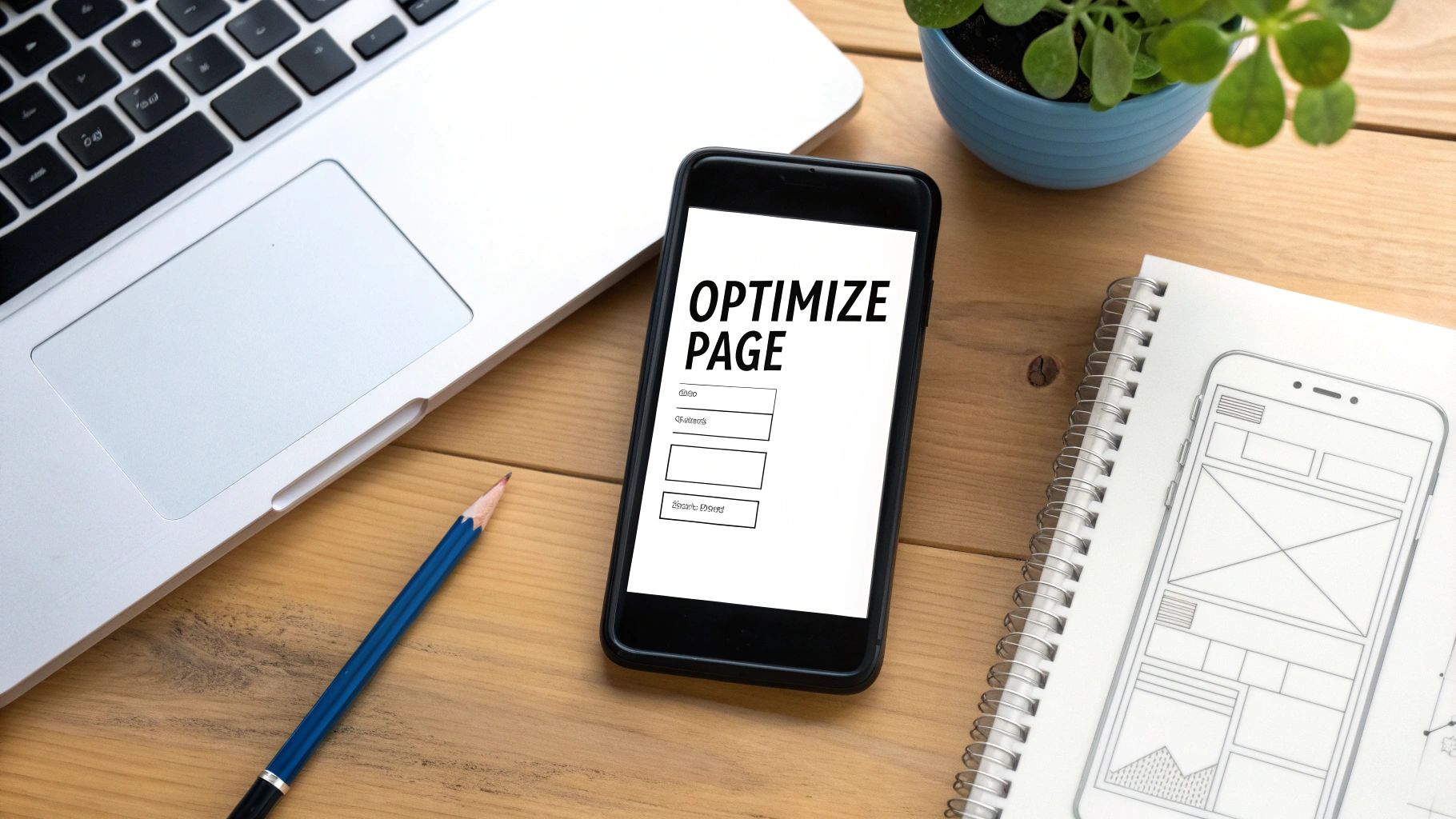
What is Landing Page Optimization and Post-Click Experience
This is the process of refining the webpage a user lands on after clicking your Facebook ad to improve conversion rates. Instead of sending traffic to a generic homepage, you create a focused page with a singular call-to-action (CTA) that mirrors the ad's messaging, creative, and offer.
Why Use This Approach
- Increases conversion rates by reducing friction and distractions
- Improves ad Quality Score by maintaining message consistency
- Enhances user experience, building trust and credibility
Successful Examples
- An e-commerce brand sends users from a specific product ad directly to that product's page, pre-populating size and color options.
- A SaaS company creates unique landing pages for each buyer persona advertised, highlighting relevant features and benefits.
- A lead generation firm uses a single-field form to minimize abandonment and capture initial interest effectively.
Actionable Tips
- Match your landing page headline directly to the ad's primary text.
- Use the same imagery or video from the ad to create a seamless visual transition.
- Ensure page load times are under 3 seconds to prevent user drop-off.
- Remove the main navigation menu to keep visitors focused on the conversion goal.
- Add trust signals like testimonials, security badges, and social proof.
- Test form length; a single field often boosts submissions, while more fields can improve lead quality.
Learn more about Landing Page Optimization and Post-Click Experience on domain.com to build pages that convert.
9. Campaign Attribution and Multi-Touch Measurement
Campaign attribution and multi-touch measurement moves beyond last-click attribution to map how each ad interaction along the customer journey influences final conversions. By applying models such as first-click, linear, and time-decay, marketers can see which Facebook campaigns contribute most to results. This data-driven approach empowers you to allocate budget toward high-impact touchpoints for better ROI.
What is Campaign Attribution and Multi-Touch Measurement
This method tracks every user interaction across paid and organic channels. It then assigns credit to each touchpoint based on the chosen attribution model. You can compare first-click influence, uniform credit distribution, or heavier weight on recent ads to optimize spend and understand the full value of your Facebook ad mix.
Why Use This Approach
- Uncovers hidden contribution of top-of-funnel awareness ads
- Ensures fair budget allocation across awareness, consideration, and conversion
- Improves long-term performance by spotlighting high-value sequences
Successful Examples
- B2B SaaS brand found awareness ads drive 40% of conversions under first-click model
- E-commerce store saw retargeting campaigns deliver 80% of assisted conversions
- Financial services firm proved brand-building ads drive incremental lift over six months
Actionable Tips
- Implement UTM parameters across ads to trace every conversion path
- Use Conversions API for accurate server-side data
- Test first-click vs time-decay models to measure credit shifts
- Map entire conversion paths to identify critical touchpoints
- Run incrementality tests to validate attribution findings
Learn more about Campaign Attribution and Multi-Touch Measurement on domain.com to refine your strategy.
10. Audience Exclusion and Negative Targeting
Audience exclusion and negative targeting is a crucial practice for preventing ad spend waste by strategically removing specific user groups from your campaigns. This ensures your ads are only shown to audiences most likely to convert, improving overall campaign efficiency and return on ad spend (ROAS).
What is Audience Exclusion and Negative Targeting
This method involves creating and applying exclusion lists to your ad sets to prevent ad delivery to certain segments. This can include users who have already converted, existing customers, people in non-target demographics, or audiences that have shown low engagement with your brand in the past.
Why Use This Approach
- Reduces wasted ad spend on users who have already converted or are irrelevant
- Improves campaign efficiency by focusing budget on high-potential audiences
- Enhances user experience by avoiding irrelevant or repetitive ads for existing customers
Successful Examples
- An e-commerce store running a "new customer" promotion excluded its entire list of past purchasers, resulting in a 25 percent reduction in cost per acquisition
- A SaaS company excluded users currently in a free trial from ads promoting a paid subscription, which increased sign-ups from genuinely new leads
- A financial services firm excluded its existing client base from top-of-funnel acquisition campaigns, reallocating the saved budget to expand its reach to new prospects
Actionable Tips
- Always exclude recent purchasers from acquisition campaigns to avoid paying to re-acquire customers
- Create custom exclusion lists based on customer lifecycle stages, such as new customers versus loyal, repeat buyers
- Exclude low-engagement audiences, like users who visited your site but did not convert after a specific time frame
- Use exclusion windows (e.g., 30-90 days) to temporarily remove non-converters before attempting to re-engage them
- Regularly update your exclusion lists (ideally monthly) to include new conversions and customer data
Top 10 Facebook Ads Best Practices Comparison
| Tactic | Implementation Complexity 🔄 | Resources & Budget ⚡ | Expected Outcomes ⭐📊 | Ideal Use Cases 💡 | Key Advantages ⭐ |
|---|---|---|---|---|---|
| Audience Segmentation and Layered Targeting | 🔄 Medium–High — data collection & audience maintenance | ⚡ Moderate — CRM/data tools and analytics | ⭐⭐⭐⭐ — higher relevance; 📊 improved engagement & ROI, reduced wasted spend | 💡 E‑commerce, SaaS, retailers needing personalized messaging | Precise personalization; better ROI; lookalike expansion |
| Video-First Creative Strategy | 🔄 High — production, editing, format variations | ⚡ High — video production and ongoing asset creation | ⭐⭐⭐⭐⭐ — very high engagement; 📊 higher CTR, recall, conversions | 💡 Brand awareness, mobile-first campaigns, storytelling | Strong storytelling; superior engagement and recall |
| Dynamic Creative Optimization (DCO) | 🔄 Medium — asset feed setup and monitoring | ⚡ Moderate–High — many creative assets + budget for learning ($1k+/wk) | ⭐⭐⭐⭐ — automated combo testing; 📊 faster ROAS improvements (≈15–25%) | 💡 Brands with many creatives or large e‑commerce catalogs | Scales multivariate testing; automates creative allocation |
| Strategic Bid Strategy & Automated Bidding | 🔄 Low–Medium — config and periodic monitoring | ⚡ Moderate — needs historical data and sufficient daily budget ($500+/day) | ⭐⭐⭐ — better auction efficiency; 📊 more predictable CPA/ROAS | 💡 E‑commerce, lead gen, app install campaigns with clear KPIs | Reduces manual bidding; adapts to auction dynamics |
| Conversion Tracking & Pixel Implementation | 🔄 High — technical setup and server‑side integration | ⚡ Moderate — developer time, Conversion API tooling | ⭐⭐⭐⭐ — foundational accuracy; 📊 enables attribution, audiences & optimization | 💡 All campaigns — essential for measurement and retargeting | Enables reliable measurement, audience building, optimization |
| A/B Testing Framework & Statistical Rigor | 🔄 Medium–High — test design, sample calculations, analysis | ⚡ Moderate — traffic/time and statistical tooling | ⭐⭐⭐⭐ — statistically validated winners; 📊 compounding conversion gains | 💡 Landing pages, creatives, CRO initiatives needing confidence | Avoids false positives; builds repeatable insights |
| Retargeting & Audience Sequencing | 🔄 Medium — audience flows and sequential messaging setup | ⚡ Moderate — creative sets + pixel data | ⭐⭐⭐⭐ — high lift vs cold traffic; 📊 lower CPA, higher conversion rates (3–10x) | 💡 Cart abandoners, nurture sequences, mid/bottom funnel | Re‑engages warm users; tailored journey messaging |
| Landing Page Optimization & Post‑Click Experience | 🔄 Medium — design, dev, and ongoing testing | ⚡ Moderate — landing builders, dev and testing tools | ⭐⭐⭐⭐ — 2–5x higher conversions vs homepage; 📊 better QS and lower CPM | 💡 Lead gen, product-specific campaigns, single CTA offers | Message match; reduced friction; higher CVR |
| Campaign Attribution & Multi‑Touch Measurement | 🔄 High — model implementation and data integration | ⚡ Moderate–High — analytics platforms and expertise | ⭐⭐⭐ — clearer contribution of touchpoints; 📊 better budget allocation | 💡 B2B/long purchase cycles and multi‑channel funnels | Reveals assisted conversions; justifies upper‑funnel spend |
| Audience Exclusion & Negative Targeting | 🔄 Low–Medium — exclusion list management | ⚡ Low — list updates and maintenance | ⭐⭐⭐ — efficiency gains; 📊 can improve ROAS ~15–30% by reducing waste | 💡 Acquisition campaigns where converters or low‑intent users exist | Reduces wasted spend; prevents ad fatigue; preserves reach quality |
From Best Practices to Best Performance
You now have a comprehensive blueprint for transforming your Facebook advertising efforts. We have moved far beyond surface-level tips, diving deep into the strategic frameworks that separate stagnant campaigns from those that drive scalable, predictable growth. Implementing these best practices for Facebook ads is not about executing a single tactic perfectly; it is about building an interconnected system where each component amplifies the others.
Think of it as an engine. Your layered audience targeting and negative exclusions act as the GPS, ensuring you are on the right road. Your video-first creative and Dynamic Creative Optimization are the high-octane fuel that powers engagement. Meanwhile, your strategic bidding, A/B testing framework, and precise conversion tracking are the diagnostic tools, constantly monitoring and fine-tuning performance for maximum efficiency. Each element is critical, and when they work in harmony, the results are powerful.
Your Actionable Next Steps
To truly move the needle, you must transition from learning to doing. Do not try to implement all ten strategies at once. Instead, identify the one or two areas that represent your biggest opportunity for improvement right now.
- Audit Your Foundation: Is your Facebook Pixel and Conversion API implementation flawless? Without accurate data, every other optimization effort is compromised. Start here if you have any doubts.
- Refine Your Targeting: Are you still using broad, single-interest audiences? Your next step should be to build layered audiences and implement a structured retargeting sequence.
- Commit to Testing: If you are not running structured A/B tests, you are operating on assumptions. Launch your first simple test this week, whether it’s for a new creative headline or a different landing page.
Mastering these concepts transforms you from a passive ad-spender into a strategic digital marketer. You gain the ability to not only acquire customers but to do so profitably and at scale. This is the difference between simply being on Facebook and succeeding on Facebook. The journey from "best practices" to "best performance" is an ongoing process of testing, learning, and iterating. Start that process today, focus on incremental improvements, and you will build a formidable advertising machine that consistently delivers results for your business.
Ready to close the gap between generating a lead and converting a customer? Many of the best practices for Facebook ads focus on generating high-quality leads, but their value diminishes with every minute of delay in your follow-up. LeadSavvy Pro automates this crucial step, instantly syncing your new Facebook leads to your CRM or a Google Sheet, so you can connect with them while their intent is at its peak. Try LeadSavvy Pro today and ensure no lead ever goes cold again.


